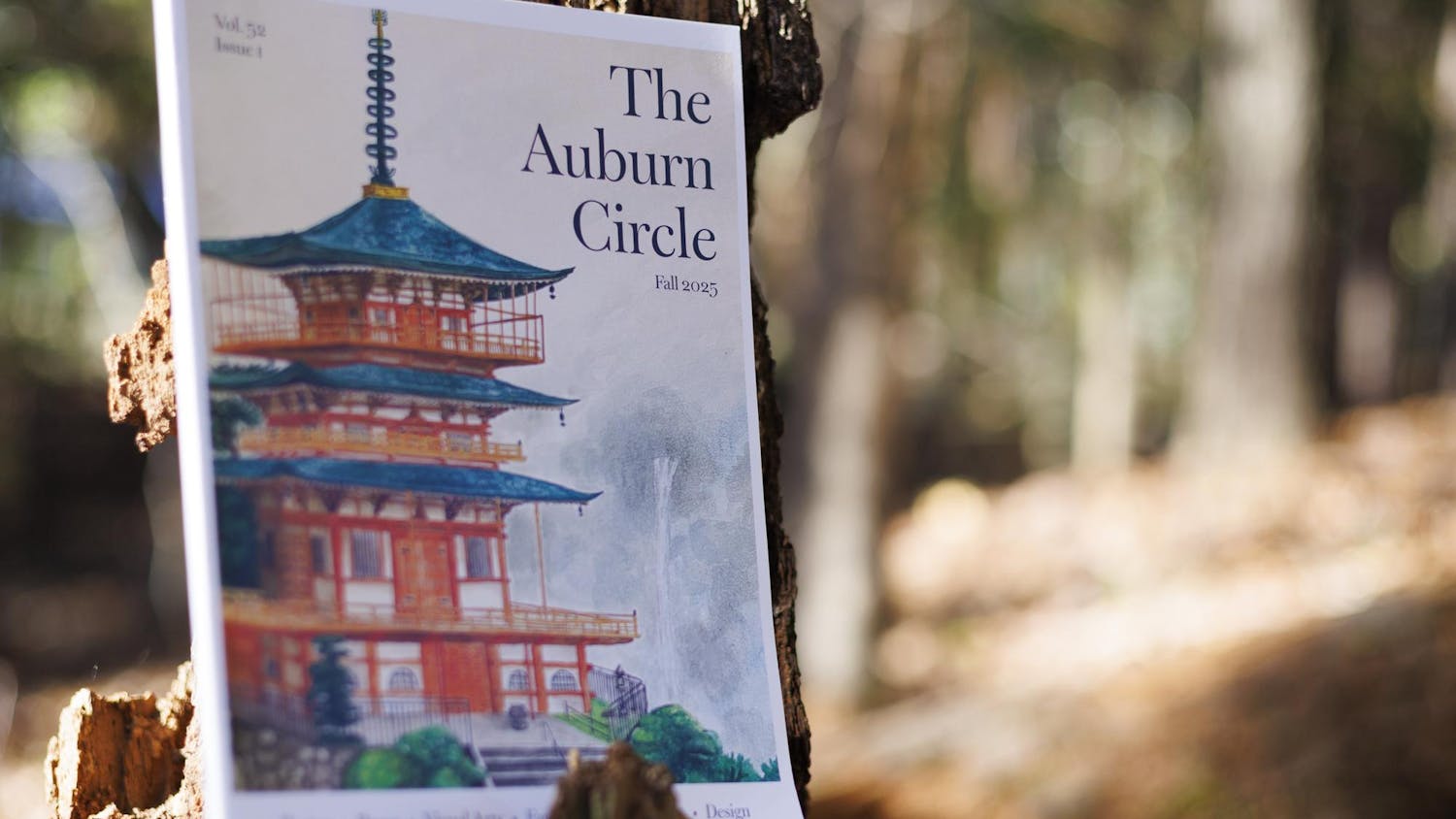Surrounded by a loving family, a pup named Brownie, a tropical fish and a few ducks, National Geographic photographer Joel Sartore cultivated his love for wildlife from a young age.
Sartore visited Auburn University on Friday to share his photos and experiences of the last 25 years with the Auburn Family.
Sartore pioneered the Photo Ark, a collection of thousands of animal species, preserved forever in a frame. The project began in 1995, and to date there more than 7,800 animals documented in front of black and white backgrounds. The Photo Ark’s goal is to connect humanity to nature and to make people care about the animals that are so often neglected.
Sartore’s fascination with the unique began when he was just a child, and his parents fostered a love within him for nature and for the defenseless. Sartore said that he spent much time at a local zoo, acquainting himself with the animals and their unique personalities.
“I went to the Omaha Zoo as often as my parents would take me when I was a child,” Sartore told The Plainsman. “To me, it was better than Disney World.”
Sartore cites his parents as being influential in his developing love for nature.
“My parents cared, made sure I was out in nature and appreciated it. That made all the difference.”
Sartore tries to reflect that same love and care with his own daughter. He owns a prairie where he used to take photos of the local wildlife, and his family built a Monarch butterfly garden in his backyard in Nebraska.
In Sartore’s general address to more than 300 members of the Auburn community, he stressed the importance of noticing the things around us – the people, the places, and the wildlife.
The event was held at 4 p.m. on Friday in Foy Hall – and seemingly every seat was taken. There were students who lined the walls and the back of the auditorium in order to steal a glance at the famous photos that are circulating the internet and to hear the voice of the storyteller who captured them.
He described working for National Geographic as high stress and high-reward and spoke of the pressures of the job. “We’re all freelance,” he told the group of invested listeners. “We are only as good as our next story.”
Sartore told The Plainsman that the biggest challenge he faces is visiting all of the zoos that have invited him to speak. Years ago, he said, the hardest part was getting zoos and aquariums to let him in.
“That’s very gratifying,” he said. Sartore said that he never imagined the Photo Ark would have as much global impact as it did.
He has visited more than 40 countries in the last 25 years, seeking new species to photograph and experiencing some interesting encounters along the way.
Sartore begins with each animal on a black background. Part of the beauty of the Photo Ark is the stark contrast between the simple background and the complexity of the animal pictured.
“I start out with each animal on black because I like the way that looks the best,” Sartore said. “If we have time and the animal has the inclination, we try to get white as well, which gives off a more positive feeling overall.”
Sartore has shot almost 8,000 animals to date, but not all the animals are the most willing to have their pictures taken.
The crowd roared with laughter as Sartore shared a “chimpanzee incident” video in which a chimp tore down the background that they had created for the photoshoot. In another video, a large tiger playfully rolled around on the floor, avoiding the constructed background, for more than two and a half hours.
Sartore said that working with all of the animals can be incredibly difficult, but is rewarding. Patience and skill are key in getting these shots to share with the world.
“Each of these animals has an amazing story to tell,” he said. “The big question is, will we be wise enough to listen?”
Sartore spoke of the importance of environmental conservation, of political awareness, and of taking the time to slow down and recognize the resources around us – and their quick depletion.
He shared the story of several koalas in an urban community that had begun living among people. One of the photos taken from the project, of several dead koalas lying mangled on a blue tarp, struck a chord within the hearts of many.
Sartore’s mission was to make people aware of what urbanization and disregard for natural environments had done to these animal groups. He succeeded in that community, but his mission still continues today.
He pursued 30 stories in his first 17 years, constantly living on the road and chasing after whatever came next.
When his wife was diagnosed with breast cancer, Sartore decided that it was time to return home. During that period, he said, “I didn’t take many pictures… But I had a chance to stop. I got the chance to think about my life, and for a guy who loves nature, I didn’t have much in front of me.”
This moment set his mind into motion. It forced him to realize that our lives aren’t guaranteed and that we only have a certain amount of time to live, to make an impact. For the animals we share the planet with, this time is even shorter and more critical. This turned his thoughts into a spinning, cyclical hamster wheel which connected nature to humanity. It was one of the defining moments in Sartore’s career.
He then made it his mission to make people care. He wanted to draw in the attention of the globe – to cause individuals to slow down from the hectic and compulsive patterns that dictated their busy lives, to see the other – too see nature – and to really know its beauty. He wanted people to look outside of themselves, and to care.
“We really do need nature to survive. The public just doesn't understand that fully yet because they're so distracted these days. Through the Photo Ark, I'm trying to change all that.”
When asked what his favorite animal to shoot was, Satore answered that his photos are like his kids. "My favorite one is always the next one," he said.
With more than half of the 12,000 species project edited and archived, Sartore said that his plan is to continue shooting the Ark each month until he completes the collection.
“Then I’ll be done,” he said. “In every way.”
Do you like this story? The Plainsman doesn't accept money from tuition or student fees, and we don't charge a subscription fee. But you can donate to support The Plainsman.




